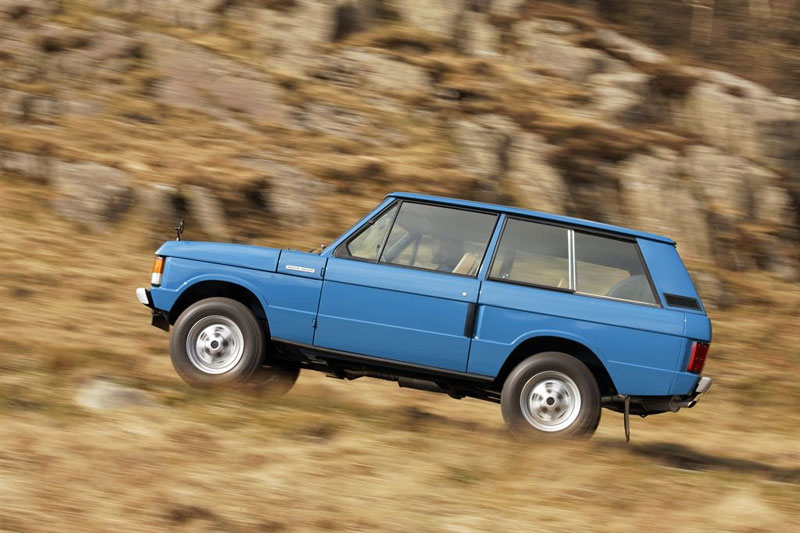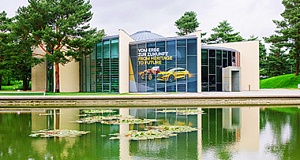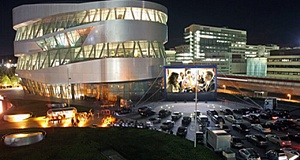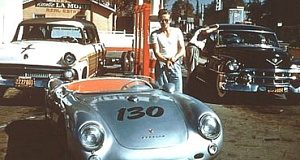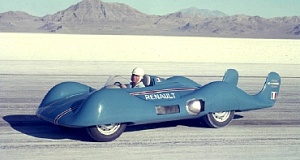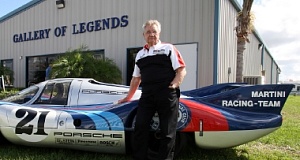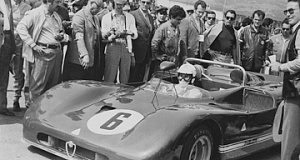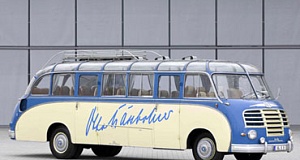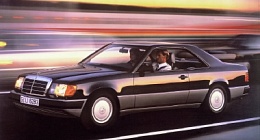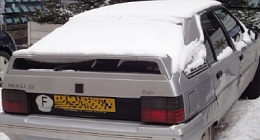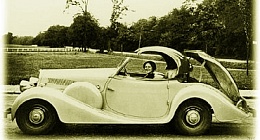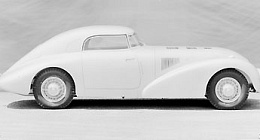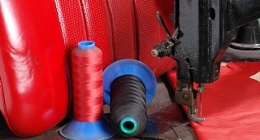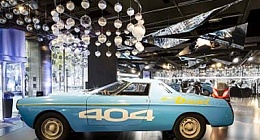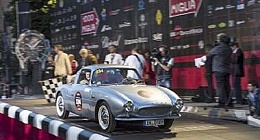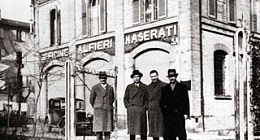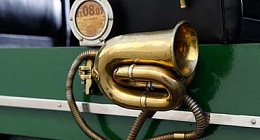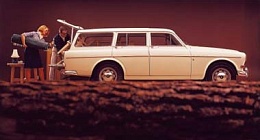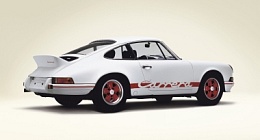History in detail
"The idea was to combine the comfort and on-road ability of a Rover saloon with the
off-road ability of a Land Rover. Nobody was doing it."
Charles Spencer 'Spen' King - the father of the Range Rover.
The inspiration came from the Rover car company's engineering chief for new vehicle projects. Charles Spencer 'Spen' King worked mostly on Rover cars, not on Land Rover (at the time, Rover's 4x4 wing). Yet Land Rover was in his blood. His uncles were the Wilks brothers - Spencer and Maurice - who jointly founded Land Rover in 1948.
"The idea was to combine the comfort and on-road ability of a Rover saloon with the off-road ability of a Land Rover," says King. "Nobody was doing it at the time. It seemed worth a try and Land Rover needed a new product."
The growing 4x4 leisure market
In the mid '60s, Rover engineers visited America to garner ideas on how to boost the company's sales in the US. Dealers there confirmed that a market for 4x4 leisure vehicles was growing. Appealing to those who liked towing, camping and led an outdoor life, but also wanted a vehicle with freeway and urban-driving potential.
There were a few big-capacity vehicles, all American. The Jeep Wagoneer, Ford Bronco and International Harvester Scout were spacious, easy-driving station wagons that had selectable four-wheel drive to give some off-road potential, and gutsy engines to give reasonable on-road performance. In Europe, there was no such car. Land Rover engineers evaluated these American vehicles. They offered an interesting mix of abilities. But, in reality, they were nothing like as capable as a Land Rover in the rough, or as relaxing and accomplished as a normal saloon on-road.
"The Range Rover turned out to be quite a different vehicle. The goal was to launch a 4x4 with similar comfort and on-road capability. At the same time, I really thought it must be possible to offer much greater comfort than a Land Rover without sacrificing the off-road ability," says King. "Then the V8 engine came along [which Rover bought from General Motors]. It all came together and nobody stopped us from doing it. Our American importers also told us that the 4x4 leisure market was going to be big."
It took Land Rover another 17 years (until 1987) before the Range Rover was launched in North America, due to the initial success of the vehicle elsewhere in Europe. "I don't think there was any real urgency to get into America. The US's unique new safety and emissions legislation were too expensive to engineer," he added.
The '100-inch station wagon'
Work on the first prototype Range Rover, then known as the '100-inch station wagon', began in 1966. "It was going to be a premium leisure vehicle, but not really a luxury vehicle," says former project engineer Geof Miller. "It was also intended to be technically adventurous. Spen was convinced the vehicle must have car-like coil springs front and rear for on-road ride comfort, and no other 4x4 offered them. It needed very long travel suspension for off-road suppleness." Other technical novelties would include an aluminium body (like the Land Rover), an all-aluminium engine and disc brakes all round. (See 'Technology' section for more information.)
At the time, Land Rovers were enjoying record popularity. Many within Land Rover doubted the need for such a vehicle, and questioned the demand. Among the doubters was Land Rover's chief engineer, Tom Barton, a key figure in the development of the first Land Rover and a former railway engineer. He steadfastly maintained that the best suspension system for an off-road vehicle was leaf springs, as used by nearly all 4x4s of the time (a few American large 4x4s had front coils). The fact that the driving force behind the new Range Rover was Rover's car division, not the Land Rover 4x4 division, further alienated Barton and some other Land Rover diehards.
'A Land Rover for the price of a Rover saloon'
Land Rover's sales people were also worried. "How can we sell a Land Rover for the price of a Rover 2000 saloon? That was their worry," says Geof Miller. "They weren't really sure exactly what the vehicle was, or who it would appeal to. That's always the challenge with a new type of car."
According to Spen King, target customers were 'senior officers in the army, head guys on building sites, well-off farmers, that sort of person'. It appealed to all those people - and many more. "To be frank, it appealed to all sorts of people who we hadn't expected," adds Miller.
Only 10 prototypes were built before the first production vehicle came down the Solihull production line. Early prototypes carried 'Velar' badges, jointly from the Spanish 'velar' (to look after, to watch over) and the Italian 'velare' (to veil, to cover). The actual Range Rover name was coined by stylist Tony Poole, after other model names - among them Panther and Leopard - were rejected.
'Four vehicles in one'
The Range Rover was announced to the world's media on 17 June, 1970 (the press launch was in Cornwall, with the off-road testing in tin mines near St Agnes). The first Range Rover sales brochure spoke about 'the most versatile motor car in the world', and the 'interfusing of Rover car comfort with Land Rover strength and four-wheel drive mobility'.
"The Range Rover is really four vehicles in one," says managing director Phil Popham. "It's a seven-days-a-week luxury motor car; a leisure vehicle that will range far and wide on the highways and noways of the world; a high performance car for long distance travel; and a working cross-country vehicle."
The Range Rover could do all these things. No other car in the world could even get close to that blend of abilities.
At launch, the target audience had also been more carefully considered. The brochure said they were: 'Business and professional people with a leaning towards the great outdoors, who want a purpose-built vehicle instead of an adapted one, the real thing instead of a compromise'.
A car 'for all seasons'
The press kit called the car 'the Range Rover Station Wagon' (though the station wagon tag was soon dropped), and said it was 'equally at home on a ranch in Texas as on the fast lane of a motorway in Europe'. It was also called the car 'for all seasons', a catchy promotional tag that stuck.
Early marketing material highlighted the car's towing capacity - 'Harnessed to a trailer, caravan, boat or horse-box, the Range Rover is a tower of strength that takes all the normal stresses and strains, doubts and worries out of this kind of operation'. It emphasised the vehicle's highway capability, unique among 4x4s: 'On main roads and motorways, the Range Rover can cruise at speeds of up to 90mph'.
Much was made of its ability of 'roughing it in luxury': 'One has only to experience the thrill of driving straight off the road and across a rough field with no slackening of speed and little change in the car's ride characteristics to realise that the Range Rover is a very special kind of vehicle'.
Roger Crathorne, later head of the Land Rover Experience, was a Range Rover engineer during the first model's development. "I remember the first time I drove a prototype at the MIRA test track in England. It was brilliant. I remember doing 100mph on the track. I thought: 'This vehicle is extraordinary - comfortable, fast, a brilliant and spacious touring car'. Just as impressive was its off-road ability, which was much better than any contemporary Land Rover. The reason was axle articulation, on account of those coil springs. It had double the articulation of a normal Land Rover and, as a result, was more comfortable and more capable over rough terrain."



